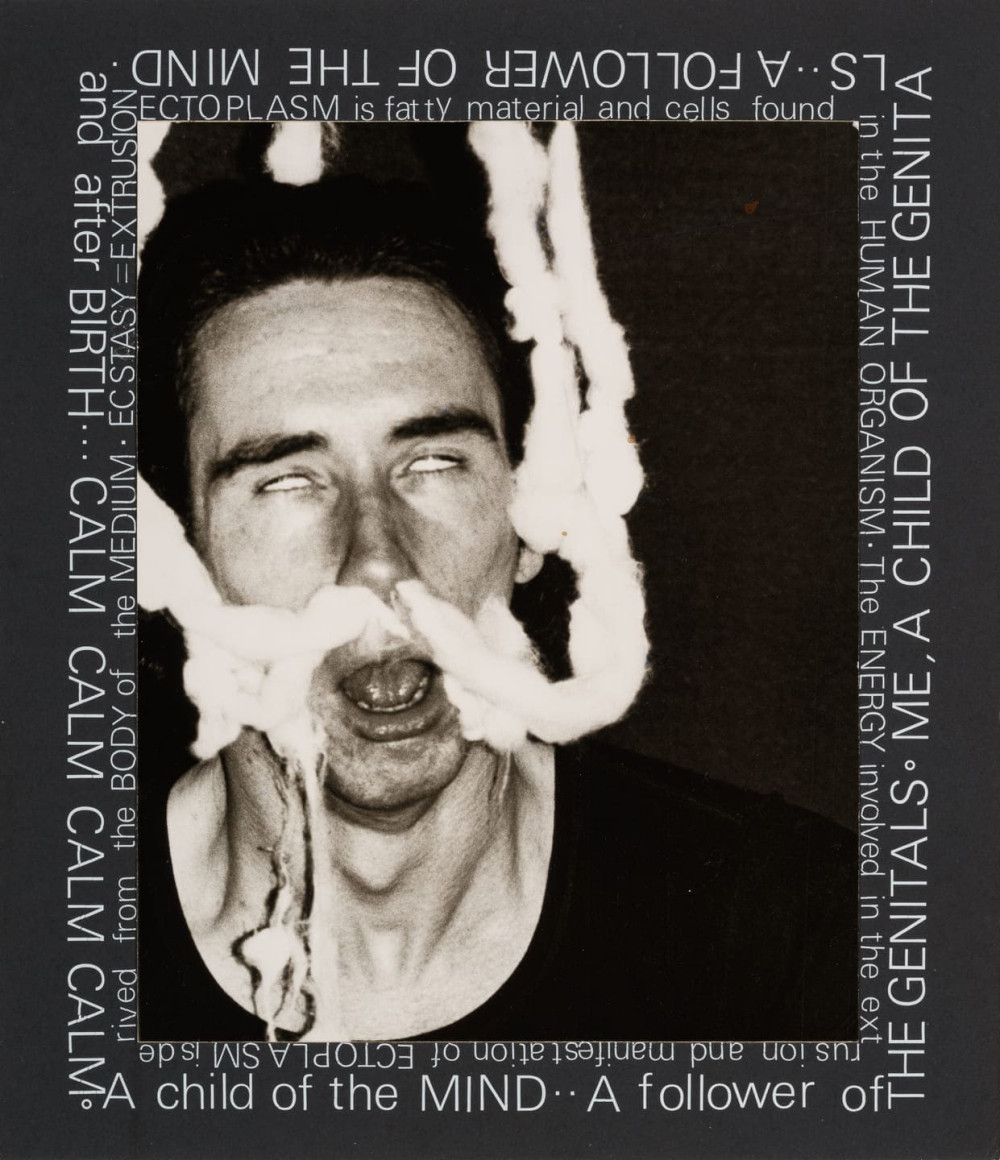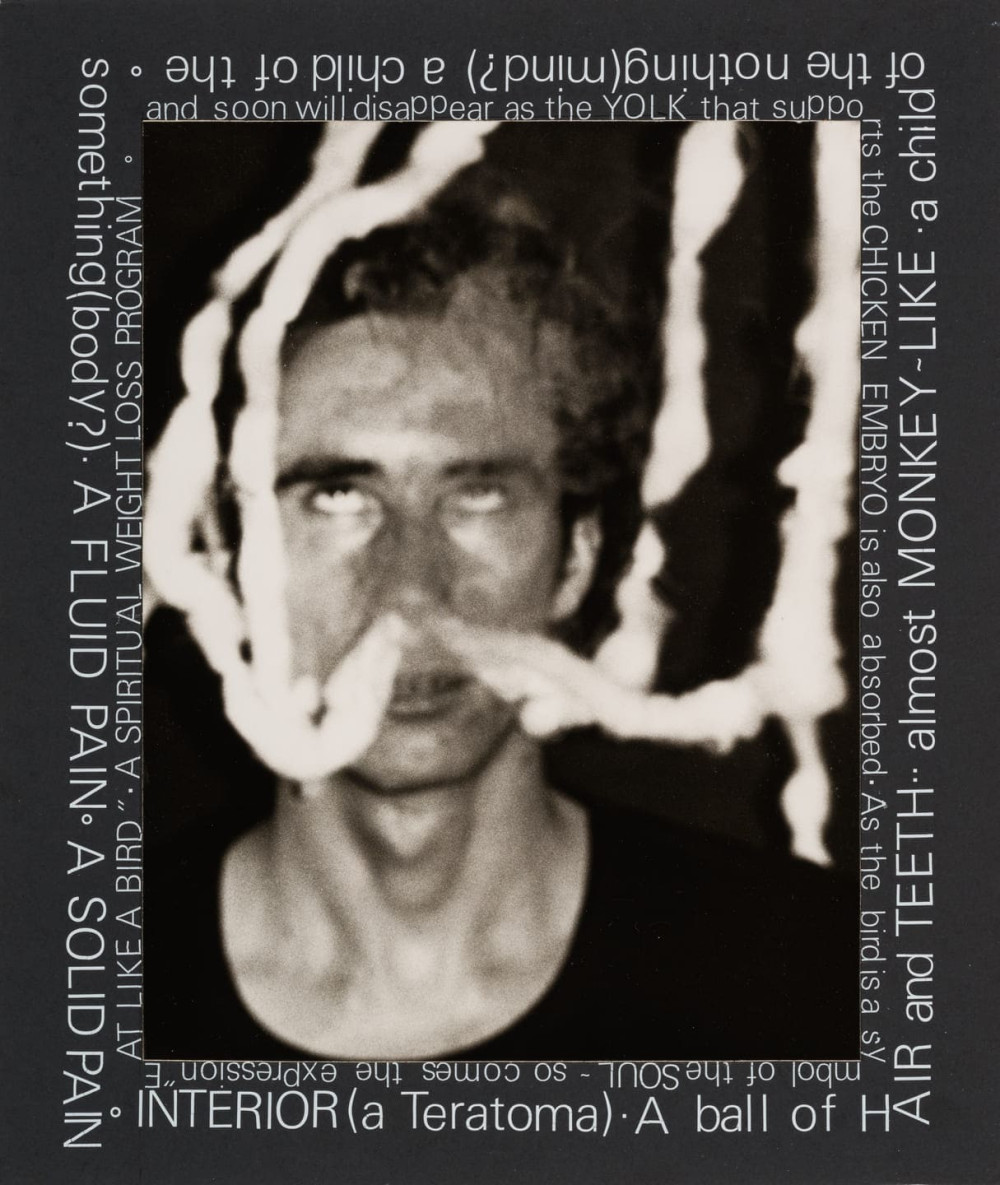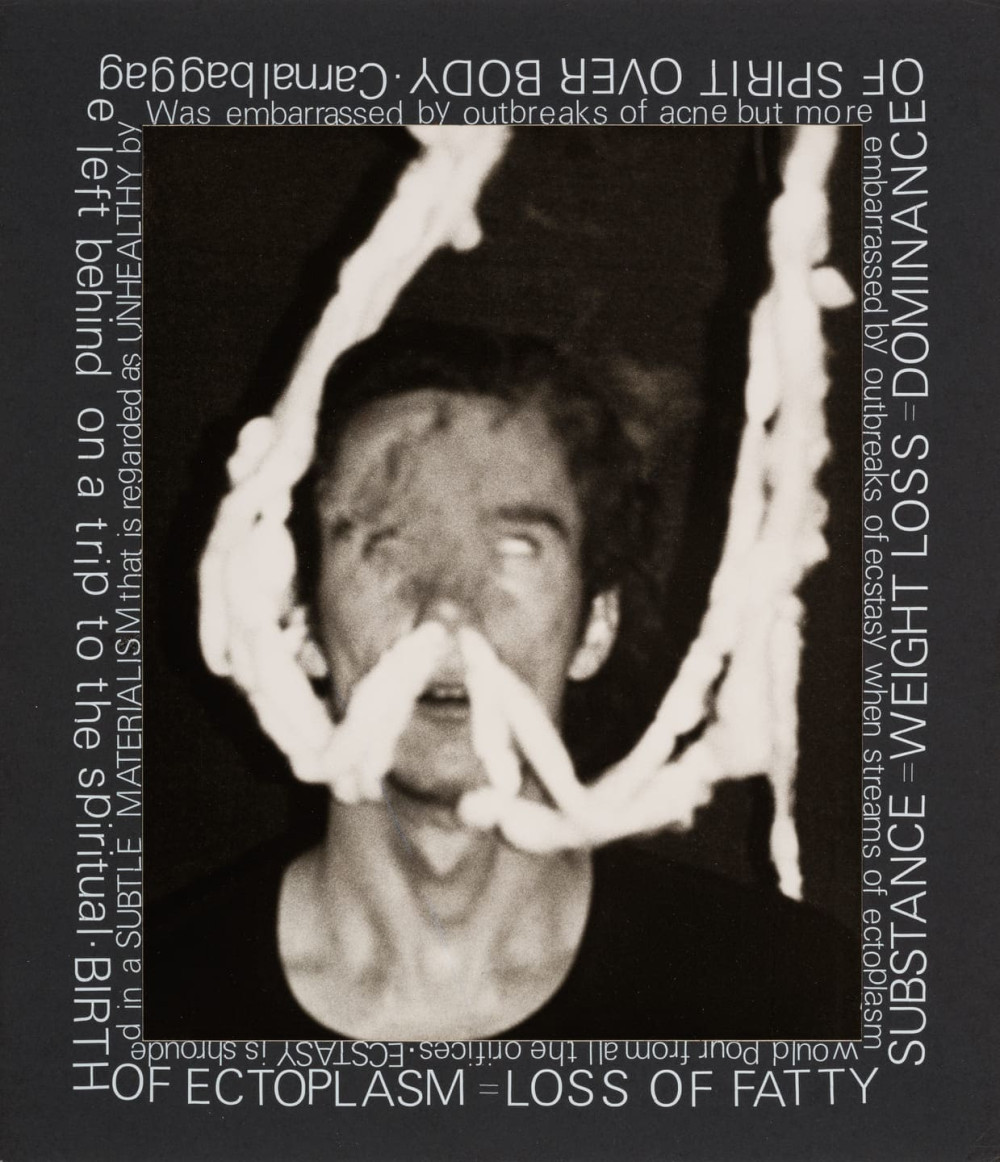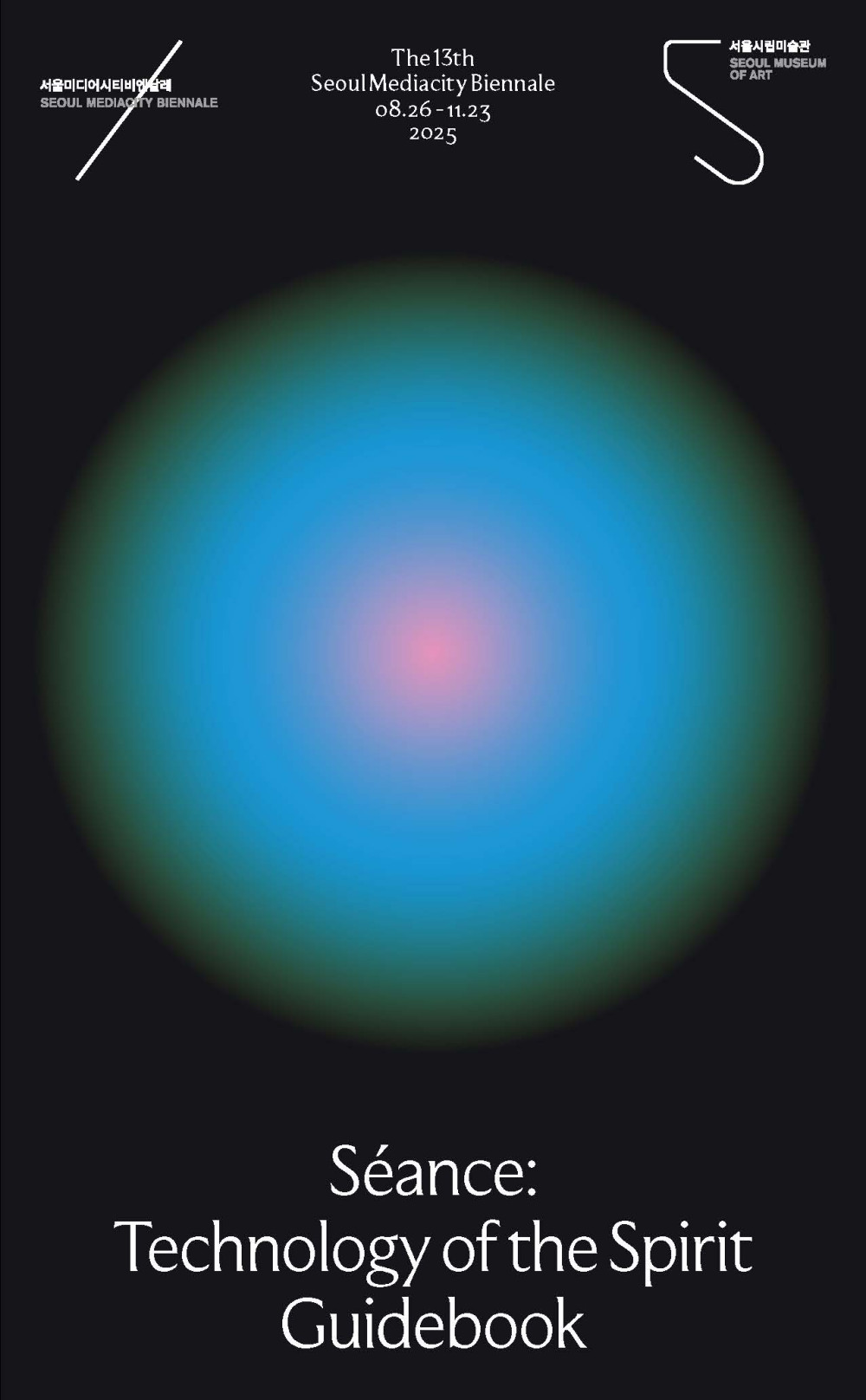
Mike Kelley (1954-2012) mined the histories of popular culture and high art in his investigations into the operations of memory, trauma, and repression in contemporary American life. His work evinced a consistent fascination in the occult and the uncanny, particularly as they might be used to unsettle the behavioral codes, psychological processes, and systems of belief that structured twentieth-century capitalist society.
“The Poltergeist” series pays ambivalent homage to the history of spiritualist photography, which gained popularity at the end of the nineteenth century for its claim to capture images of the dead on film. In these staged self-portraits, the artist is caught in the act of making contact with the spirit realm. The luminous substance streaming from the artist’s nose, mouth, and ears is ectoplasm, a paranormal material that emanates from the body of a medium in the performance of a séance. Only a skeptical materialist could mistake it for cotton wool.
Accompanied by a series of short texts elaborating on the physical characteristics of a poltergeist, these images play on the association of photography with documentary reality. In doing so, they call into question the viewer’s faith in the capacity of art to reveal deeper truths and represent hidden forces.
Mike Kelley, Ectoplasm #1, A Child of The Mind, from The Poltergeist, 1979
Mike Kelley, Ectoplasm #2, Exterior-Ectoplasmic Phantom, from The Poltergeist, 1979
Mike Kelley, Ectoplasm #3, Interior a Teratoma, from The Poltergeist, 1979
Mike Kelley, Ectoplasm #4, Birth of Ectoplasm, from The Poltergeist, 1979






